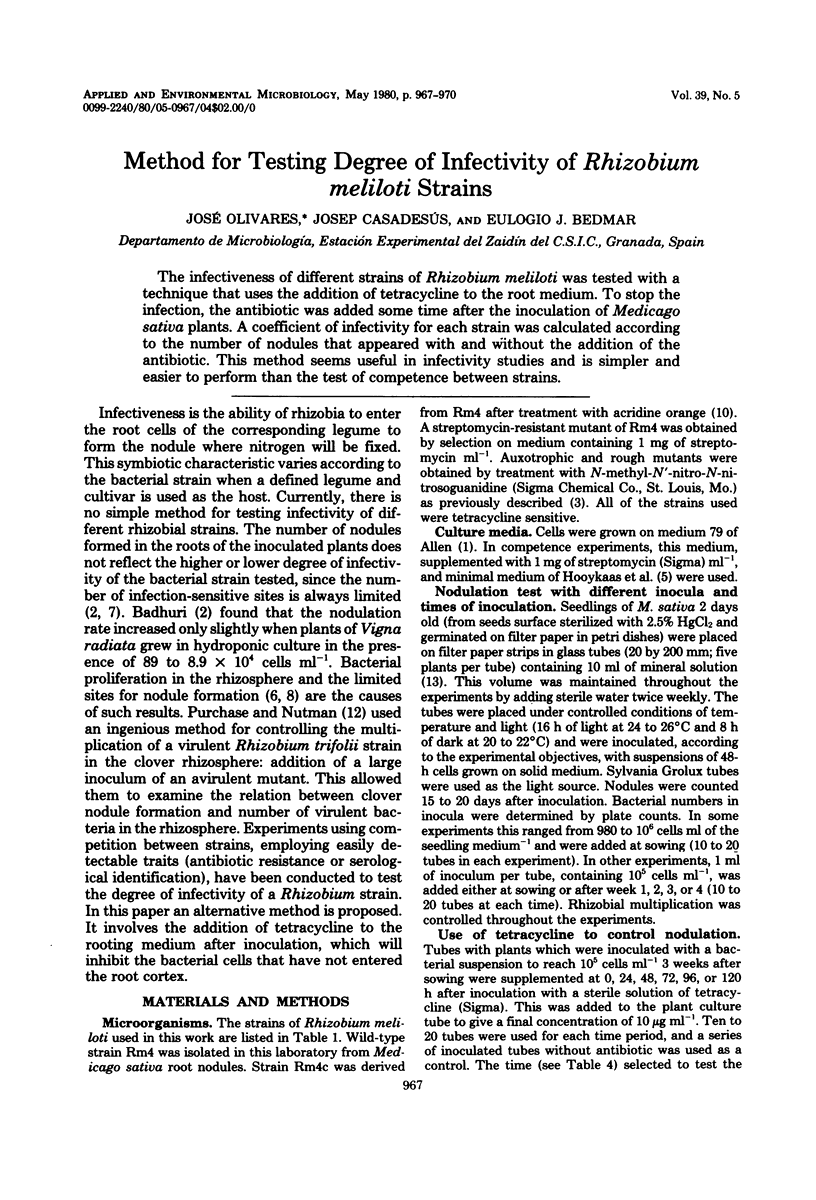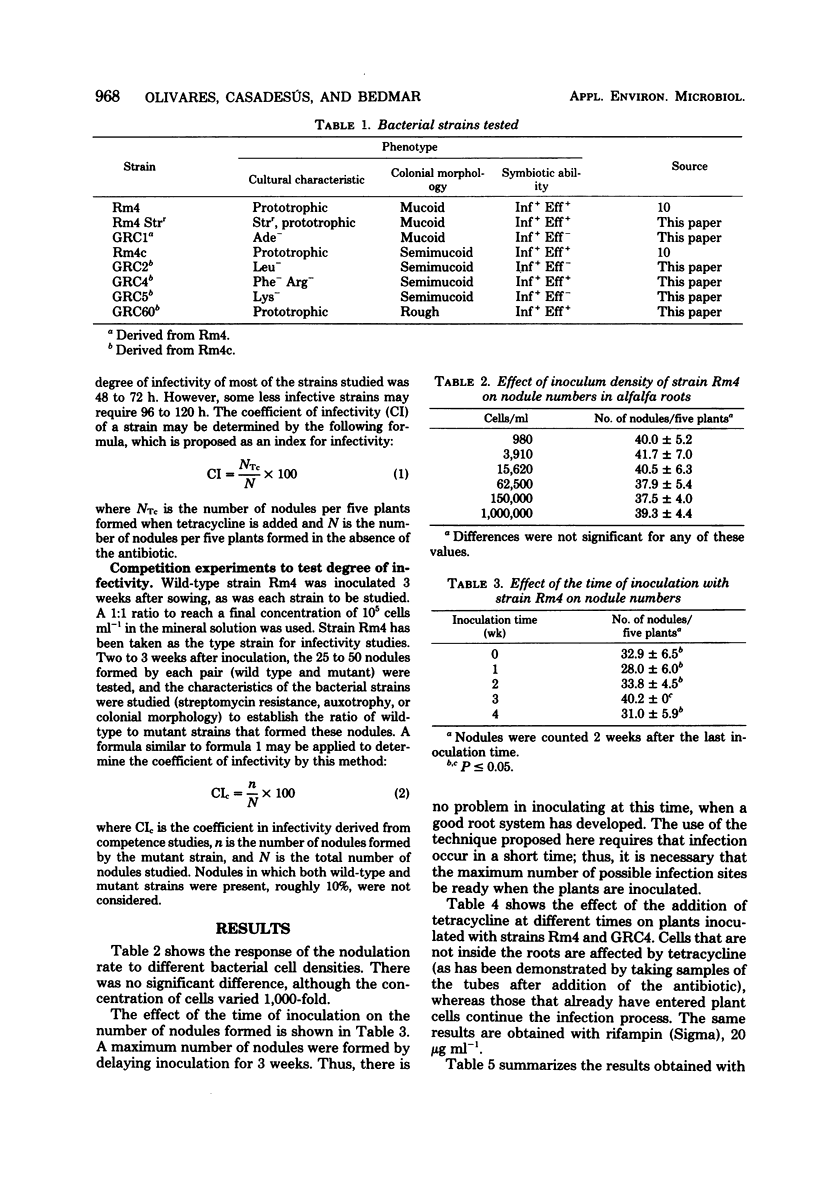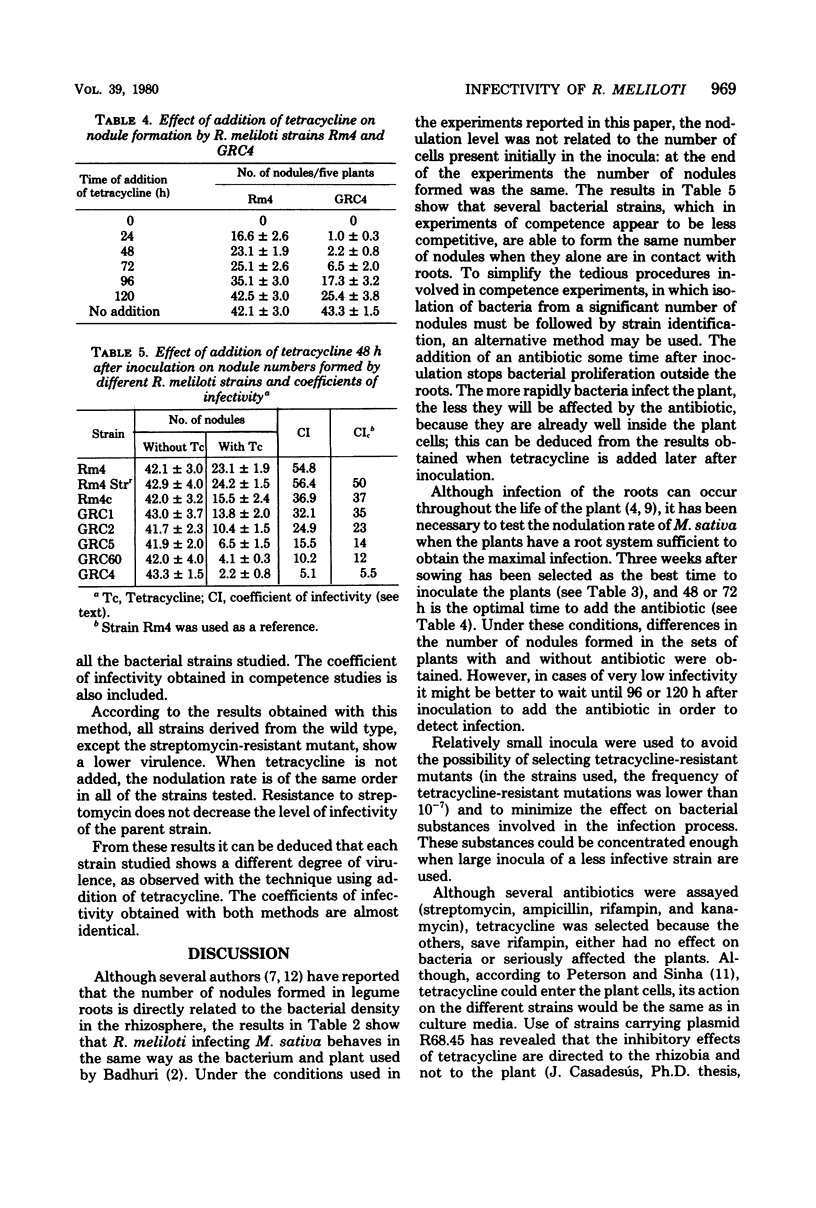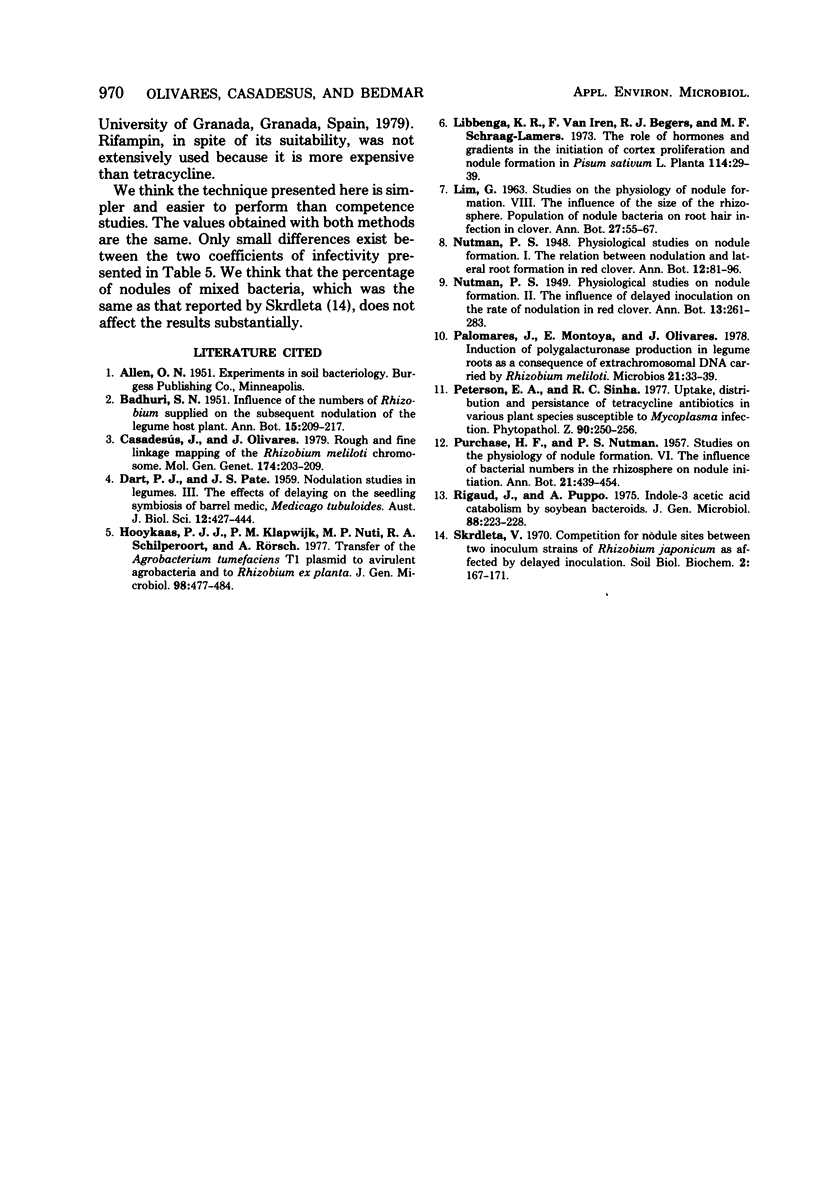Abstract
The infectiveness of different strains of Rhizobium meliloti was tested with a technique that uses the addition of tetracycline to the root medium. To stop the infection, the antibiotic was added some time after the inoculation of Medicago sativa plants. A coefficient of infectivity for each strain was calculated according to the number of nodules that appeared with and without the addition of the antibiotic. This method seems useful in infectivity studies and is simpler and easier to perform than the test of competence between strains.
Full text
PDF



Selected References
These references are in PubMed. This may not be the complete list of references from this article.
- Casadesús J., Olivares J. Rough and fine linkage mapping of the Rhizobium meliloti chromosome. Mol Gen Genet. 1979 Jul 13;174(2):203–209. doi: 10.1007/BF00268356. [DOI] [PubMed] [Google Scholar]
- Palomares A., Montoya E., Olivares J. Induction of polygalacturonase production in legume roots as a consequence of extrachromosomal DNA carried by Rhizobium meliloti. Microbios. 1978;21(83):33–39. [PubMed] [Google Scholar]


